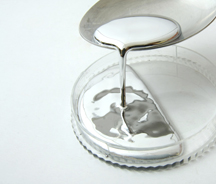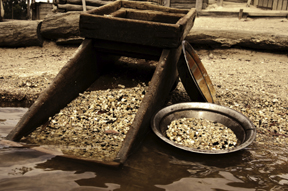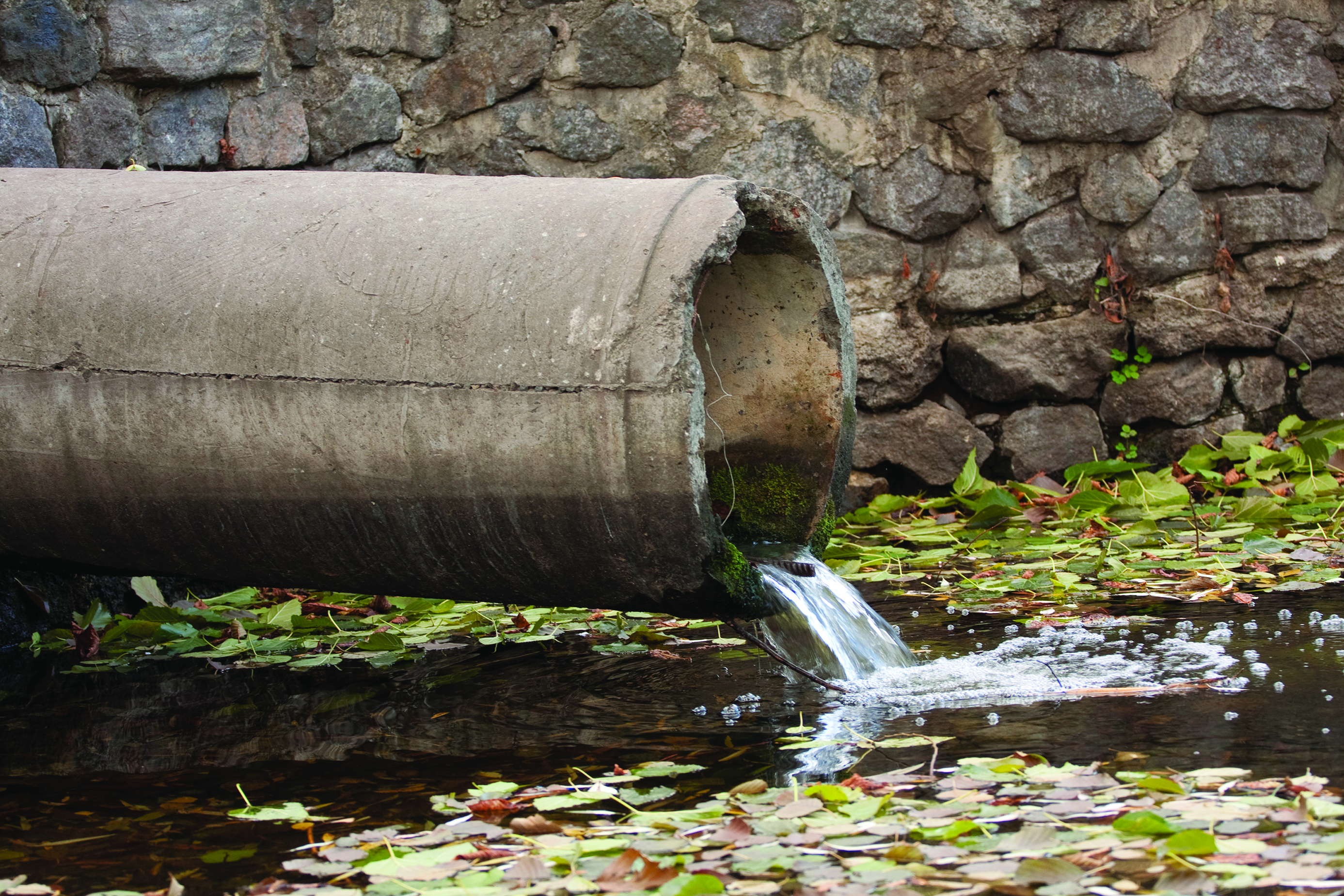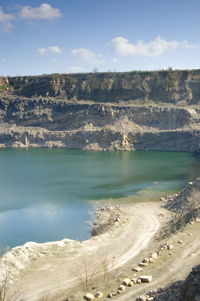Having taken a look at Gold Rush era mercury use and its modern consequences in our last blog it only seems logical to discuss what mercury is and why it poses such great human health risks. Because mercury and its associated risks is a broad topic, part three of our series on mercury will only look at mercury’s most well known forms.
Read MoreTeledyne Leeman Labs Blog
The Gold Rush's Legacy… Once Gold, Now Mercury in Abundance
Posted by Jason Davis on Oct 28, 2014 3:26:31 PM
The following is Part I of a multi-part series of posts about Mercury
Overview
A recent series of articles in the The Tribune, a newspaper covering San Luis Obispo, Calif. and surrounding communities, highlighted the legacy of California’s mountain of gold and the environmental hazard leftover from the intense mining of the era. The articles reminded me of a 2013 report1 in USA Today about the findings of high levels of mercury in sites along the California’s Yuba River. While mercury emissions and environmental contamination is not a new topic, I was surprised to learn that the origins of the mercury were traced to the immense piles of Gold Rush-era mining debris in the river valley. As one subject is often interwoven with another, I eventually found myself digging up mining practices of 1848, sifting through fact sheets explaining mercury’s various forms and health effects, and finally examining statistics and perspectives on how researchers are addressing mercury contamination today.
Read MoreTags: Interest Stories
Part III – Gold Rush: Mercury and its Various Forms
Posted by Jason Davis on Oct 28, 2014 2:04:00 PM
Part III – Gold Rush: Mercury and its Various Forms
In part two of our Mercury blog post, we described Mercury and provided some initial details on the various forms of the element. In this post, we will go into more detail elemental, inorganic and organic forms of mercury.
Elemental Mercury
Mercury in elemental form is a silver-colored liquid that remains liquid at room temperature. Inorganic mercury is mined and processed to generate elemental mercury[i]. It is poorly absorbed by ingestion and contact with skin, and ingested elemental mercury is not absorbed in significant quantities[ii]. Because elemental mercury is absorbed slowly, a majority of it passes the digestive system without doing significant harm.
Read MoreTags: mercury
More than 144 homes in a two-square mile southeast of Los Angeles County are the focus of lead contamination test after the California Department of Toxic Substances Control detected high levels of lead in soil near a temporarily closed battery recycling plant. In the fall of 2013, elevated levels of lead at 39 homes and a preschool near the plant were blamed on air pollution from the plant and prompted local officials to issue health warnings and push for additional testing. State regulators expanded the lead soil testing to include more than 144 homes in Vernon, California.
Read MoreTags: ICP-OES, Lead Contamination
Mercury Contamination Causing Major Health Problems in Birds - Need for Mercury analysis in water and food
Posted by Betsey Seibel on Oct 1, 2014 2:08:12 PM
Recently more 750 scientists from around the world gathered at the Animal Behavior Society meeting at Princeton University. They gathered to discuss… you guessed it… animals; all kinds of animals, from fish to birds. Among the topics of discussions was the impact of liquid metal mercury, even small doses, on the animal kingdom, particularly in birds. In humans, large doses of mercury can cause lethargy and depression, while smaller amounts can lead to dementia. In animals that are much smaller, the impact can be even more significant.
Researchers at the College of William and Mary conducted an experiment where they exposed zebra finches to mercury levels consistent with a contaminated environment. Rather than lethargy or depression, the finches exhibited symptoms more on the side of dementia. The birds were “bolder and hyperactive,” and “spent less time feeding” compared with birds that had not been exposed to the metal. Because of this behavior, the finches could be at risk of increased predation. Unfortunately, they discovered some other disturbing trends.
Read MoreTags: Hg analysis, mercury
Where does roughly half of all mercury that enters public water treatment systems come from?
If you answered dental offices, you would be correct.
According the U.S. Environment Protection Agency 120,000 dental offices use or dispose of amalgam fillings, which contain a mixture of mercury and other metals used in dental fillings. Most of these offices are attached to public sewer systems. The amalgam waste is flushed at the point-of-care down chair-side drains. When the amalgam is discharged into the sewer systems, it can be transformed into methylmercury, which is a highly toxic neurotoxin that impairs brain and nervous system development and function. Methylmercury can build up in fish, shellfish and fish-eating animals, which can be harmful to humans who consume the fish.
Read MoreTags: Hg analysis, mercury
Frequently Asked Questions about EPA Method 245.7
Posted by Betsey Seibel on Sep 19, 2014 4:17:25 PM
We thought it might be helpful for those of you with questions regarding EPA Method 245.7 to create a blog post addressing some of these questions. If you have any questions regarding EPA 245.7 that we haven't addressed here, please let us know and we will do our best to provide you with the answer.
Read MoreTags: CVAF, Hg analysis, mercury analysis
Humans are Major Cause of Mercury Levels in Ocean Surface Waters
Posted by Betsey Seibel on Aug 19, 2014 4:18:00 PM
A new paper by researchers from the Woods Hole Oceanographic Institution (WHOI), Wright State University, Observatoire Midi-Pyréneés in France, and the Royal Netherlands Institute for Sea Research found that the ocean contains about “60,000 to 80,000 tons of pollution mercury. In addition, they found that ocean waters shallower than about 100 m (300 feet) have tripled in mercury concentration since the Industrial Revolution and that the ocean as a whole has shown an increase of roughly 10 percent over pre-industrial mercury levels.”[i] The paper, which appears in a recent addition of the journal of Nature “provides the first direct calculation of mercury in the global ocean from pollution based on data from 12 sampling cruises over the past 8 years,” and “a look at the global distribution of mercury in the marine environment.”
While mercury is a naturally occurring element, it is also a by-product of human mining and manufacturing operations, from burning coal to making cement. The researchers set out to better understand how much of the mercury in the ocean is a result of human activity or how much is from natural sources. The group looked at data about oceanic levels of phosphate, and by “determining the ratio of phosphate to mercury in water deeper than 1,000 meters (3,300 feet) that has not been in contact with Earth's atmosphere since the Industrial Revolution, the group was able to estimate mercury in the ocean that originated from natural sources such as the breakdown, or ‘weathering,’ of rocks on land.”
Read MoreTags: mercury analysis
Thoughts to Communities Impacted by Mount Polley Mine Breach
Posted by Betsey Seibel on Aug 14, 2014 11:57:00 AM
One week after a tailings pond dam burst at Mount Polley Mine near the cities of Williams Lake and Quesnel, British Columbia, environmental experts are saying it could be one of the worst tailings pond breaches in the world. Early estimates suggest that more than 2.64 billion gallons of mining waste and 4.5 million cubic meters of ground-up rock were released into Polley Lake, Quesnel Lake, Hazeltine Creek and Cariboo Creek. According to the mine’s owners 2013 mine report, substances that are disposed of on-site into the pond include arsenic, copper, lead, manganese, mercury, phosphorus, and selenium; among several other metals. Days following the breach, hundreds of local residents were banned from using the water for drinking or bathing, campgrounds were evacuated, fishing was banned and an emergency was declared.
As a company, we were saddened to read about the breach and by its initial and impending impact. Our first thoughts are with the people and communities in British Columbia who are suffering through this unfortunate situation. This type of disaster can have a devastating impact on the local ecosystem, and its clear that a massive waste removal project will be required in the future. Many are comparing this to a tailings pond breach in Tennessee in 2008, where cleanup was slow and estimated at $600-800 million. Monitoring the rise in toxins absorbed by fish and wildlife has started, and officials are conducting regular water quality tests of area resources to better understand the aftermaths. On a positive note, an early round of tests completed last week found that water “samples indicate that none of the chemical and physical parameter concentrations exceeded B.C. or Health Canada drinking water guidelines.” Unfortunately, “All five testing sites also had zinc levels above chronic, or long-term, exposure limits for aquatic life.”
Read MoreTags: Mining, Interest Stories
Tungsten Carbide Production and Quantification of Purity using a DC Arc Spectrometer
Posted by Jason Davis on Aug 4, 2014 12:55:31 PM
Tungsten Carbide (also called cemented carbide or simply carbide) is a metal composite created from tungsten carbide and a binder metal (usually cobalt or nickel) in powder form that is compacted and sintered in a furnace. Tungsten Carbide is used for tools, abrasives, jewelry, industrial drills, and armor-piercing ammunition due to its exceptional hardness (8.5-9.0, surpassed only by diamonds). Because the tungsten carbide particles are captured in a binder during the sintering process, the result is referred to as “cemented”.
Tags: Teledyne Leeman Labs, Prodigy DC Arc Spectrometer, High-Purity WC








